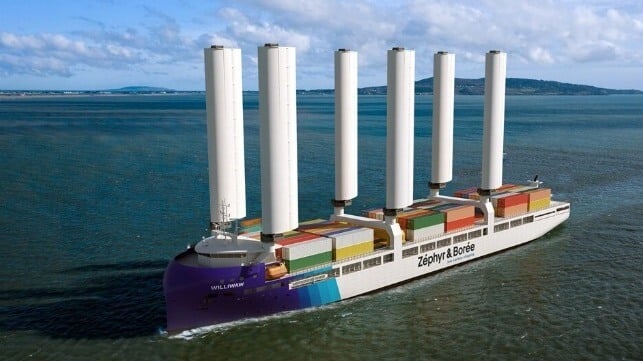BV: Wind Propulsion Has Come of Age, But Needs Better Regulatory Clarity

After working on multiple wind-propulsion projects for innovative shipowners, class society BV has carried out a new study on wind technology, and it found that the industry needs more regulatory clarity and support in order to move forward with sail power.
BV notes that the IMO has no specific regulations or guidelines on the use of wind propulsion systems, and the installation and operation of wind propulsion systems are still subject to the same rules for engine-powered vessels. This leaves operators with a lack of clarity when it comes to the options for wind-driven carbon savings - and without clarity, they cannot bank on how an investment in wind propulsion would save them money on compliance.
"The inclusion of wind propulsion in FuelEU Maritime is an important step in recognizing wind propulsion technologies as a form of propulsion. However, without international regulation, there is little incentive for industry actors to invest in wind propulsion technology. Collaboration between industry players and regulatory bodies is crucial for the advancement of this technology," said BV technology leader for sustainable shipping Aude Leblanc.
One of the principal challenges is in safety regulation. First, SOLAS does not apply to ships that are not propelled by a mechanism, so the definition of a sailing vessel for SOLAS purposes is unclear. Stability requirements and windage calculations are not defined specifically for sail power, and vessels with sails may need counter ballast and a modified vertical center of gravity to account for heel. Sail systems also introduce large blind spots, radar interference zones, and obstruction of navigation lights in traditional locations. Sail-equipped ships also have different maneuvering characteristics, especially in high winds. At present, all of these elements have the be accounted for on an ad-hoc basis with a waiver from the flag state (or other mitigation measures).
Wind propulsion can contribute to improvements in EEDI / EEXI scores, according to BV. Owners with sails on deck and other optimization investments can subtract the carbon savings from their main engine emissions for calculation purposes for compliance. The process estimates the wind propulsion system's performance based on 50% optimal conditions, assuming that the vessel will not be navigating in perfect wind conditions all the time. Further verification is conducted during sea trials to validate the claimed performance benefits (though this is not required by IMO explicitly). Best results are obtained by picking the right sail for the right application, and optimizing the entire vessel for wind propulsion.
"Today, the maritime industry has access to a vast array of wind propulsion systems that offer great diversity in terms of technology,
size range and innovative design solutions," noted BV. "From tiltable, retractable and foldable systems to containerized solutions,
the variety of options available provides flexibility to select the most suitable and efficient system for specific ship needs."
